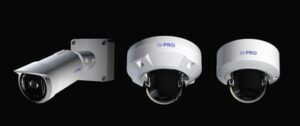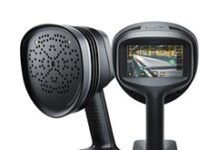
At ISC West 2024, I-Pro Co., Ltd. is showcasing Docker container support on its new X Series line of AI-enabled cameras. Docker containers directly support I-Pro’s open platform development initiatives by providing a standardised way for application developers to rapidly advance the AI capabilities of I-Pro edge devices.
Docker provides a secure, containerised environment to run custom applications while facilitating easy integration with cloud services. The environment offers a protective barrier, preventing direct access to the core operating functions of the camera, ensuring cybersecurity while allowing maximum flexibility.
“Thanks to Docker, third-party app providers can reduce development cycles and costs to develop customised AI apps,” said Hideo Noguchi, Chief Technical Officer, I-Pro. “Docker containers make tailored analytics development more accessible for everyone.”
Using Docker containers enables the modularisation of different AI components. By encapsulating various functionalities within separate containers, it becomes easier to manage and maintain the overall system. Additionally, Docker allows for easy scaling of the AI components by running multiple instances of containers across distributed edge devices.
Building applications couldn’t be easier. For example, Microsoft’s Azure IoT Edge, allows developers to design intelligent apps in the cloud and deploy them directly to IoT devices using Docker containers. A Docker layer not only improves accessibility for traditional analytics providers but also extends the camera’s utility as an IoT data collection point, enabling companies to associate video and AI metadata with additional digital transformation initiatives.
With support for up to nine AI applications, the X Series line is the most powerful AI camera to date from I-Pro. It is the first camera to support AI on-site learning while also providing powerful AI features to additional non-AI network cameras. AI on-site learning lets operators teach the camera about unique objects they wish to identify, search for, or track. For example, the camera might be taught to recognise a logo on a truck and send out an alert when it arrives at the loading dock. Likewise, it could count pallets being unloaded off a truck.
The AI processing relay application enables a single X Series camera to add AI metadata to up to three additional, non-AI cameras, even those from other manufacturers. This extends the useful life of network cameras that might be hard to reach and replace without causing significant interruption to operations. Processing multiple AI-based analytics on the edge reduces the need for expensive back-end servers and minimises notification delays.











